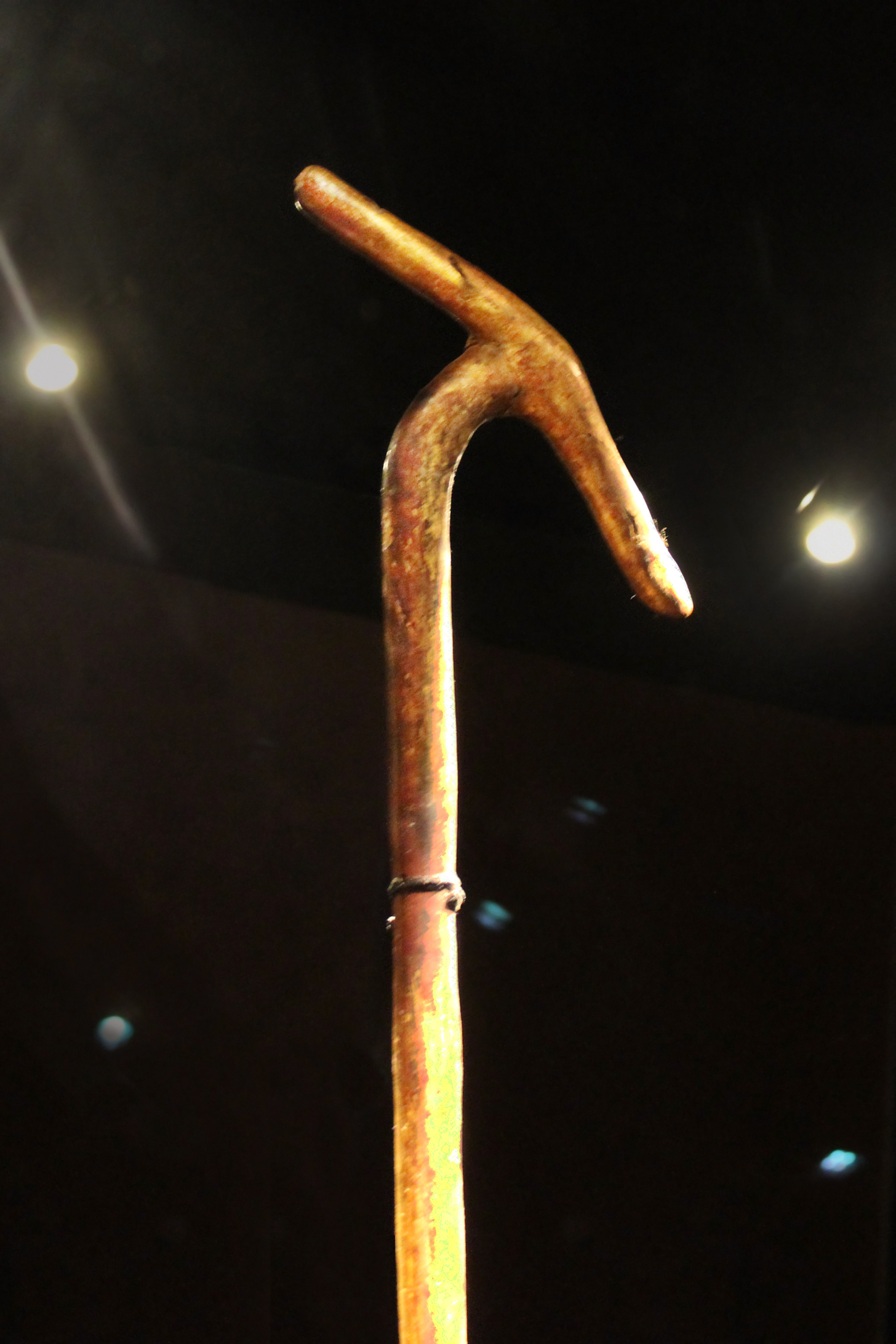
Gilded Wooden Was Scepter
Wood, Gesso, Gold Leaf
Grand Egyptian Museum #15841
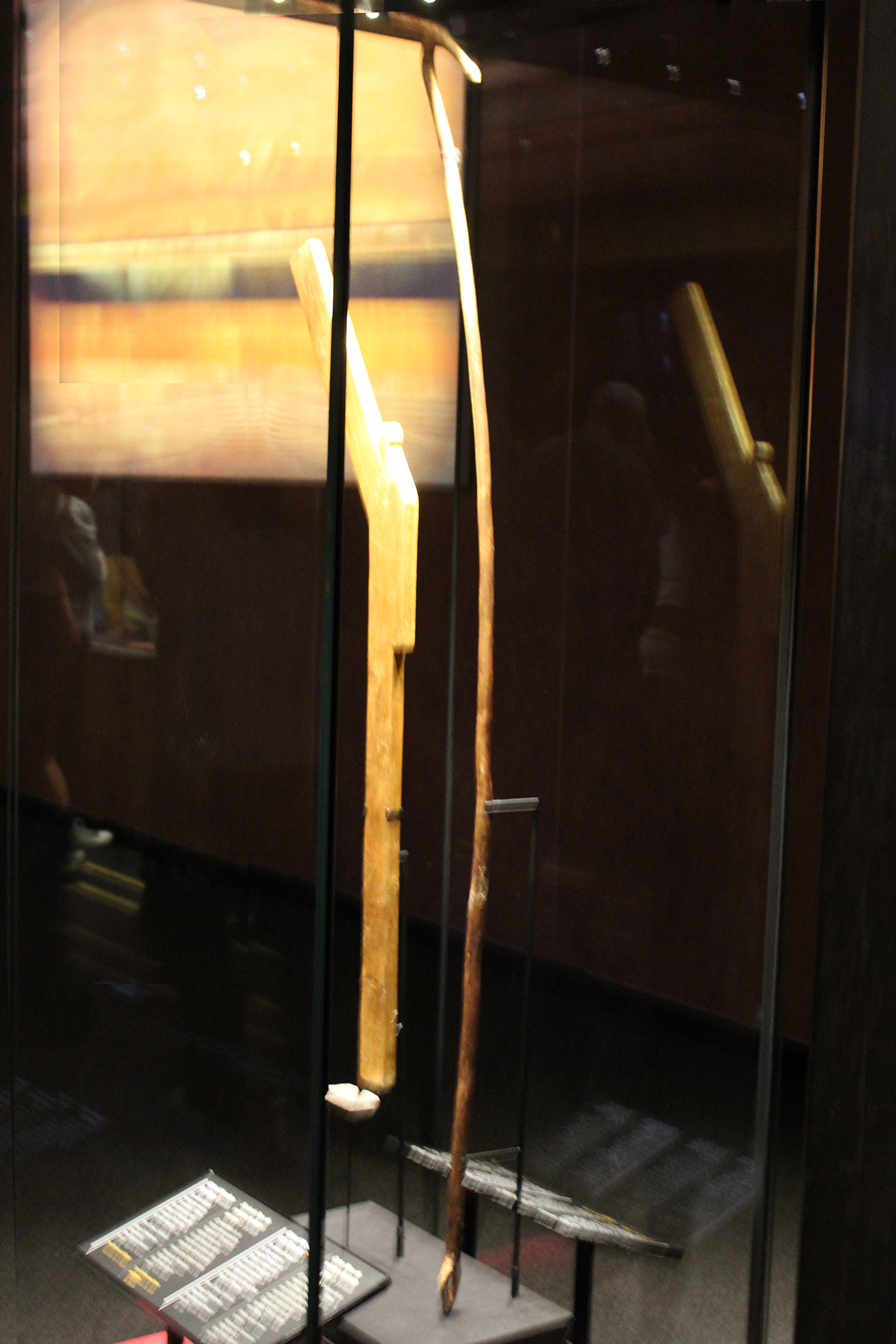
This horridly fuzzy photo shows that this is a tall scepter, designed likely for ritual and ceremonial use.
Tutankhamun had more than one Was scepter in his tomb. I saw the following while seeing the treasures of King Tut in 2005 at the Lacma museum:
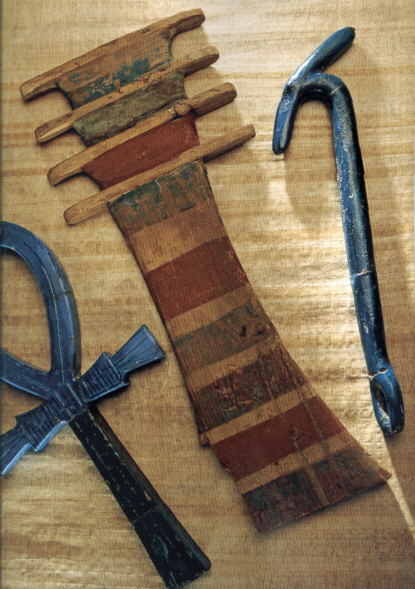
faience Ankh, wooden Djed, and faience Was scepter
(Pardon the book scan. I would have had my own photo, if it had been allowed!). So this scan comes from the companion book to the exhibit, _Tutankhamun and the Golden Age of the Pharoah_, photos by Kennett Garrett and text by Zahi Hawass. Hawass doesn't accept the many conclusions of other scholars and declares the identification with Set not "identified satisfactorily". However, many agree it is Set's head. They all agree, in any case, that it is an emblem and amplifier of power.
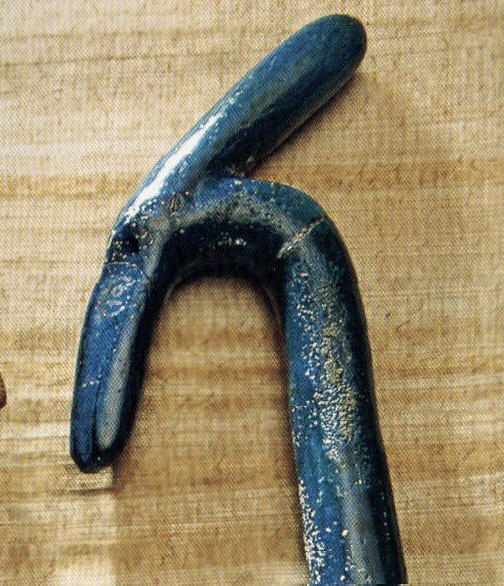
Closer view of the head...
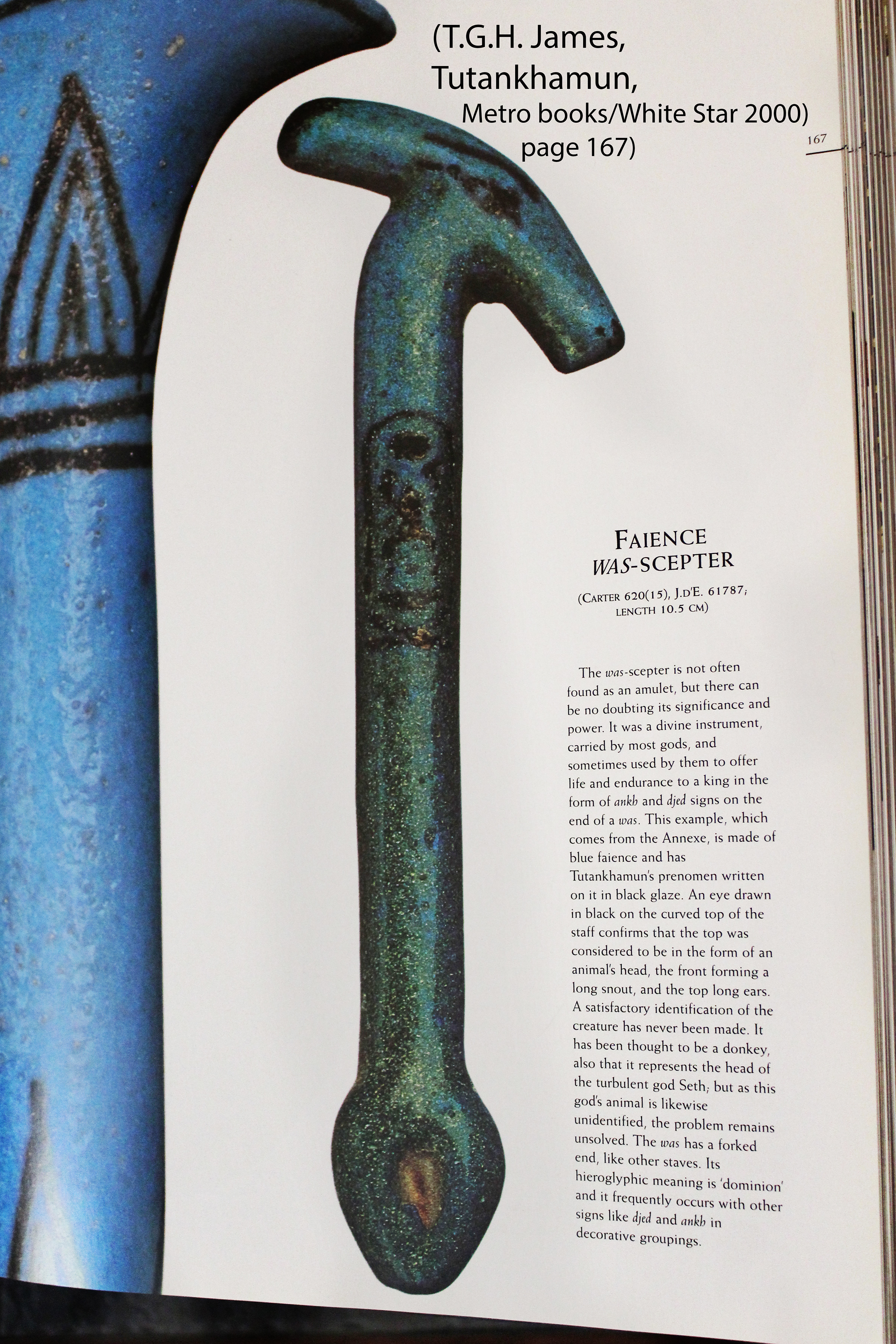
Just over 4 inches (10.5cm)
"The was-scepter is not often found as an amulet, but there can be no doubting its significance and power. It was a divine instrument, carried by most gods, and sometimes used by them to offer life and endurance to a king in the form of ankh and djed signs on the end of a was. This example, which comes from the Annexe, is made of blue faience and has Tutankhamun's prenomen written on it in black glaze." (T.G.H. James, Tutankhamun, Metro books/White Star 2000) page 167)


